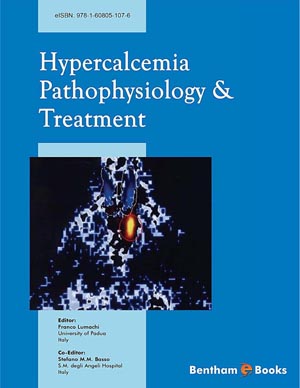Abstract
Calcium is the most represented bivalent cation in the organism, and it is essential for a variety of actions. It supports the body, and works as a second messenger, modulating different intracellular and extracellular processes. The balance of parathyroid hormone (PTH), calcitonin, and vitamin D has long been considered the main regulator of calcium metabolism, but the function of other “actors”, such as fibroblast growth factor-23 (FGF-23), Klotho gene, and transient receptor potential cation channel, subfamily V, member 5 (TPRV5) should be considered. Hypercalcemia may cause renal damage both temporary (alteration of renal tubular function for instance) and persisting (relapsing nephrolithiasis, especially with high kidney stones) by different ways, leading to a progressive loss of renal function, and ultimately the end stage renal disease with subsequent need of renal replacement therapy. A worsened renal function stimulates further alterations of calcium metabolism, and renal osteodistrophy may result. Hypercalcemia is a common problem also in renal transplant recipients, although in most cases spontaneous resolution occurs, and a modification of the PTH set up, unrelated with extracellular calcium levels, appears very often. In any case, hypercalcemia can lead to alteration of almost the whole renal tubules, modifying the glomerular filtration rate both in direct (vasoconstriction) and indirect (modification of filtration coefficient) ways. Nephrological therapies can treat both acute and chronic hypercalcemia, and it seems to be effective also in secondary hyperparathyroidism (HPT), but in other situations, such as posttransplantation HPT, a surgical approach is often needed.





















